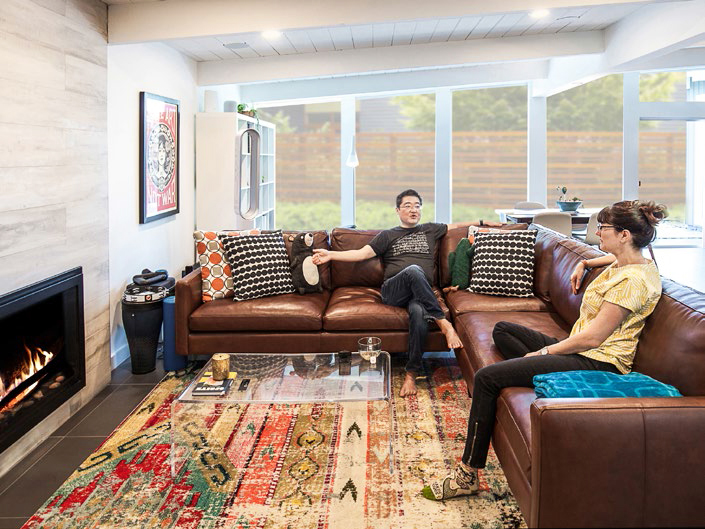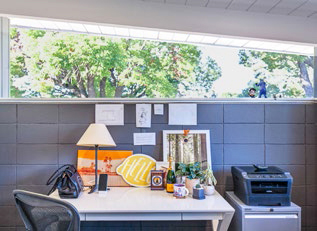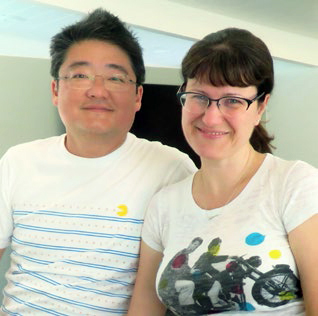Call of the Canopy - Page 4
 |
 |
|
|
 |
|
|
 |
|
|
Or Marian Vanden Bosch, a longtime sculpture teacher, who for years carved carousel horses and other animals in public view at a studio on San Francisco's Pier 39, and whose home is filled with her painted furniture, paintings, sculpture, and more. Her husband, Tom, is a photographer, model railroad enthusiast, and model builder.
And besides being an industrial and 'experience' designer, Joe Nobles is a sculptor.
Peggy Smullin, who is a painter, remembers what the neighborhood was like when it was new and she was young. Lyons Street dead-ended at a lovely Japanese nursery, which remained in place into the 1980s.
Back in the early days, the nearby creeks had yet to be channelized, and Peggy and friends would climb into them seeking tadpoles. "There were five girls my age on this block. I always had someone to play with," she says. "It was freer back then. We could go and play. It was, be home in time for dinner."
Bob Kirchgatter remembers, "When we first moved here in 1961, there must have been, I'm making a guess, 25 kids on the block."
Ken Harris, who moved here in 1964 with a wife and three young boys, says, "We liked the fact that they were Eichlers and we were close to the recreation center and schools."
Marian recalls how wonderful the nearby Red Morton Park was for the kids, with swimming, tennis, ceramics classes, and more. "It was just a wonderful thing. And the school was only two blocks down, so they could go everywhere on their own."
Eichler became known for selling to minorities. But that wasn't apparent here. "It was a middle-class, white street," Peggy Smullin says. "Even the school I went to was all white, till junior high and high school."
Today there is a mix, including several couples of mixed ethnicity.
Red Morton Park has greatly expanded and has become a draw citywide and beyond. Plans call for a YMCA to be built there. While neighbors love the park, the change raises concerns. "We'll get overflow parking for sure," Christine says.
Neighbors are also unhappy with the closure of Hawes Elementary School, which schooled so many of their children. Will the site become housing? Or artists studios? Some artists on the street hope for the latter.
Traffic is a problem, as it is everywhere on the Peninsula. Neighbors brag that they know secret routes to favored destinations, including Redwood City's lively downtown and hiking trails in the hills.
Flooding is an occasional problem. Keisha and Jeff Thoene had rainwater in their home on the days they moved in. Some people have sump pumps to drain water from backyards.
And then there is one problem that could be game changing for the neighborhood. "These trees are dying of old age," Tom Vanden Bosch says of the camphors.
And the city won't allow replacement camphors, because they buckle sidewalks. One camphor was recently replaced by another tree that looks okay, but seems out of place among older neighbors. "It broke our hearts," Mary says.
Tom, however, believes Lyons Street will survive the eventual loss of its camphor trees. "If you replace them with something else, and they grow [tall] like this, everybody would love those too."
• Fairwood is located on Lyons Street, a one-block row between Roosevelt and Oak avenues.
Photography: Sabrina Huang, Dave Weinstein; and courtesy Peggy Smullin
- « first
- ‹ previous
- 1
- 2
- 3
- 4




